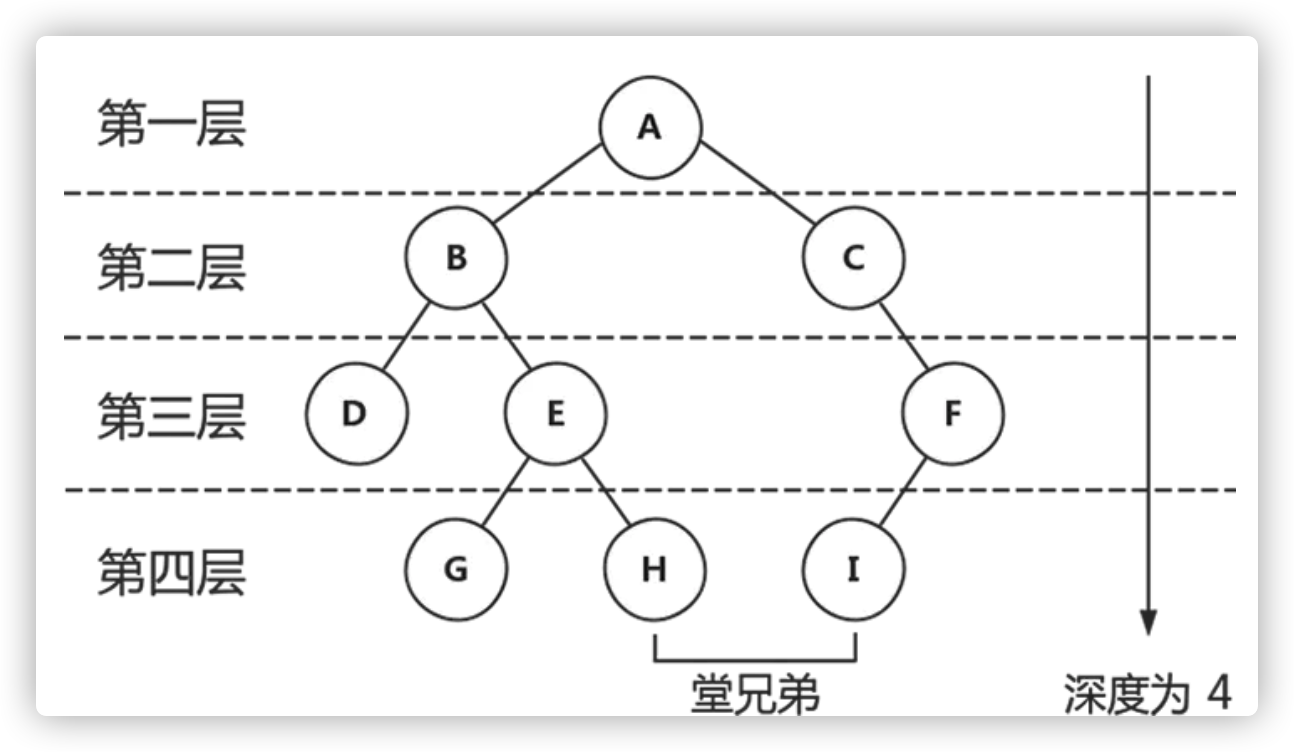树
树是n个节点的集合,树有且仅有一个顶点,被称为根节点,从根开始定义,根为第一层,根的直接子节点为第二层,依此类推,树中节点的最大层数被称为树的深度或高度。

树的遍历
在对树进行遍历的时候,可以分为先序,中序和后序,按照遍历方式可分为深度优先遍历(DFS)和广度优先遍历(BFS),详细如图:

首先我们构造一个树结构
1
2
3
4
5
6
7
8
9
10
11
12
13
14
15
16
17
18
19
20
| const tree = [
{
id: 1,
children: [
{
id: 2,
children: [{ id: 3 }, { id: 4, children: [{ id: 5 }, { id: 6 }] }],
},
],
},
{
id: 7,
children: [
{
id: 8,
children: [{ id: 9 }],
},
],
},
]
|
深度优先遍历
深度优先搜索(depth first search),从图中也可以看出来,是从根节点开始,沿树的深度进行搜索,尽可能深的搜索分支。当节点所在的边都已经搜多过,则回溯到上一个节点,再搜索其余的边。
1
2
3
4
5
6
7
8
9
10
11
12
13
14
15
16
17
18
19
20
21
22
23
24
25
26
27
28
29
30
31
32
33
34
35
36
37
38
39
40
| const depthSearchWithRecursive = (source) => {
const result = []
const dfs = (data) => {
data.forEach((element) => {
result.push(element.id)
if (element.children && element.children.length > 0) {
dfs(element.children)
}
})
}
dfs(source)
return result
}
const depthSearchWithoutRecursive = (source) => {
const result = []
const stack = JSON.parse(JSON.stringify(source))
while (stack.length !== 0) {
const node = stack.shift()
result.push(node.id)
const len = node.children && node.children.length
for (let i = len - 1; i >= 0; i -= 1) {
stack.unshift(node.children[i])
}
}
return result
}
console.log(depthSearchWithRecursive(tree))
console.log(depthSearchWithoutRecursive(tree))
|
广度优先遍历
广度优先搜索(breadth first search),从图中也可以看出来,是从根节点开始,沿树的宽度进行搜索,如果所有节点都被访问,则算法中止。
1
2
3
4
5
6
7
8
9
10
11
12
13
14
15
16
17
18
19
20
| const breadthSearch = source => {
const result = [];
const queue = JSON.parse(JSON.stringify(source));
while (queue.length > 0) {
const node = queue.shift();
result.push(node.id);
const len = node.children && node.children.length;
for (let i = 0; i < len; i += 1) {
queue.push(node.children[i]);
}
}
return result;
};
console.log(breadthSearch(tree))
|

